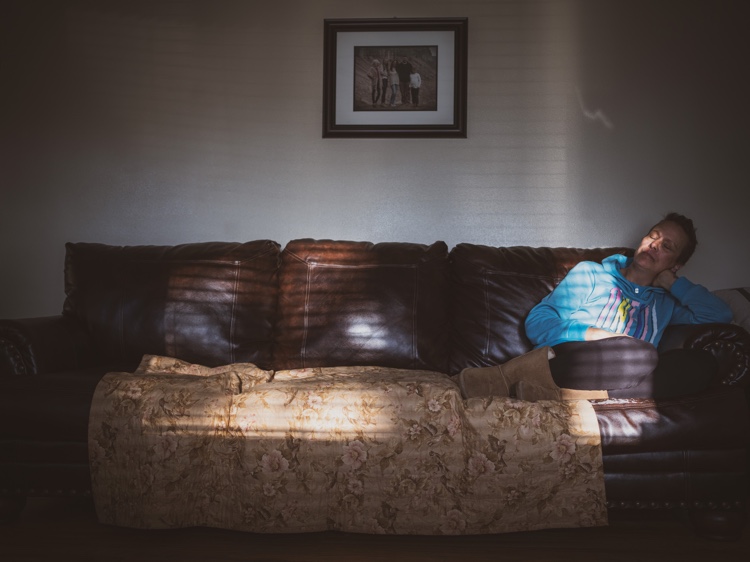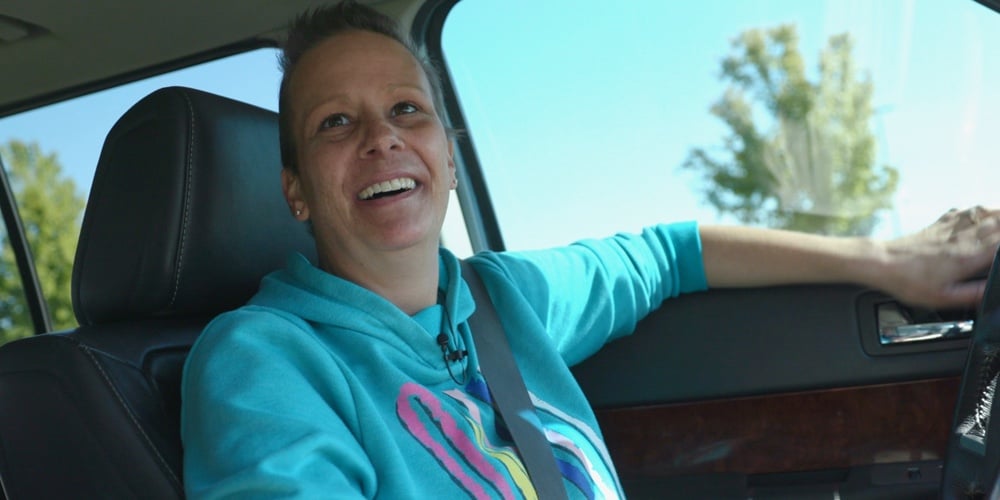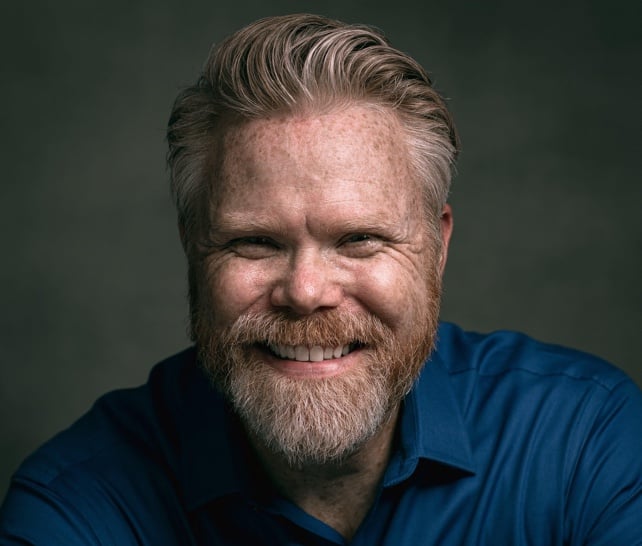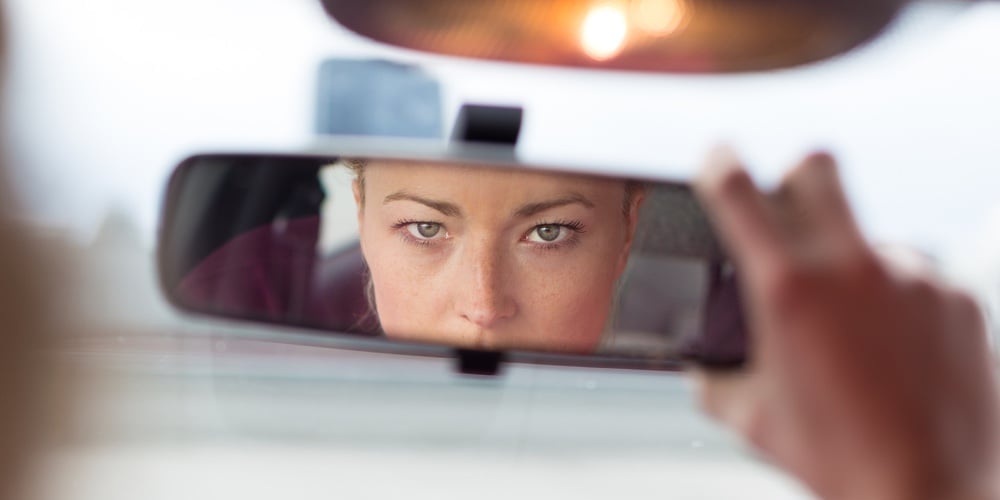Elizabeth’s smile is as bright as the late-summer sunshine outside as she sits behind the wheel of her car in the middle school pick-up lane, waiting for her son Jacoby to emerge.
She’s laughing because she knows exactly what he’ll do when he gets in. “He won’t say much, except to ask about food because he has football practice tonight,” she predicts through another laugh.
Her phone buzzes. It’s Jacoby, and he can’t find her. She shakes her head ruefully, then begins the smartphone-powered "where are you mom!?/I’m right here/where mom?!/right in front of you” Marco Polo-esque navigation routine familiar to every parent with a school-aged kid on their family plan.
Jacoby sees his mom’s car a minute later, tries to climb into the front passenger seat only to find the guy with the camera there already, then folds himself into the empty back seat instead.
She asks him how school was. “Good,” he replies. He glances out the window, pauses for a beat, then asks, “Hey mom, we got anything to eat at home? I’m starving and I gotta eat before practice.” Elizabeth laughs again, filled with joy because she gets another day with her baby boy, the only son she’ll ever have.
To the casual observer, everything about this scene looks normal. A comfortable suburban ritual completed by a typical suburban family.
But there is nothing normal here, because Elizabeth may not live to see Jacoby graduate high school.

Elizabeth is fighting stage 4 metastatic colon cancer. It is a terminal diagnosis. She’s only 43 years old.
No one, not even Elizabeth, knew she was sick until a terrible night in January 2018, when what started as a stomach ache on Saturday morning escalated to her moaning and writhing in pain by midnight on Sunday. A panicked trip to the hospital confirmed the worst - her bowels were almost 100% blocked by a tumor that was actively trying to kill her.
Even though emergency surgery removed the mass, it flung enough of itself into Elizabeth's lungs, liver, and stomach to keep her on a nearly continuous chemotherapy regimen ever since that has been, too often, more brutal than the cancer itself.
Since then, cancer has tried to annihilate her physically, emotionally, and psychologically. It hasn’t succeeded. She’s kept a brave face and strong heart through it all, modeling courage and calm for everyone around her who’ve supported her in every way they can.
She knows the statistics and the five-year mortality rates, but she is more than those bleak numbers. She has another five decades of birthdays to celebrate, grand babies to spoil, a baby boy to pick up from practice and dance with at his wedding someday.
To the casual observer, everything about her response looks normal: get sick, get brave, get treated, get better. That’s what we talk about when we talk about cancer, and rightfully so.
But there is a profound and deafening silence in this country about the financial crisis of cancer: the $75,000 emergency surgeries, $8,000 chemo treatments, $3,000 injections, prescription co- pays, and untold thousands more in unexpected out-of-pocket expenses necessary just to keep the lights on and loved ones fed.
Collectively, this avalanche buries cancer patients and their families under a mountain of debt from which they’ll never escape, and makes them nearly 3 times more likely to declare bankruptcy.
A growing number of medical experts and professional organizations are fighting the financial crisis of cancer with better education and awareness for patients, money management advice, and direct financial assistance. They’re marshaling the resources of insurance companies, healthcare advocacy groups, caregiver networks, and financial planners.
As well intentioned as these efforts are, they’ve all overlooked one industry - ours.
Virtually none of the research into the financial crisis of cancer has addressed the role that financial institutions like credit unions can and must play. The National Credit Union Foundation wants to change that, which is why I’m the guy with the camera in Elizabeth’s passenger seat.
I’m creating a documentary for NCUF called Side Effects that will combine short films, photography, essays, and audio storytelling to paint the clearest picture possible about the challenges that cancer patients face, how credit unions have eased their burden, and how these members need us now more than ever.
Set for release in early 2021, Side Effects will be the largest single project of my career, and one of the most important. You’ll hear more about it in the months ahead.
As significant as Side Effects is to me, announcing it isn't why I wrote this piece. I wrote this for Elizabeth.
She’s not just the first member I met for Side Effects, not just the first stop on my storytelling journey that will span 17 states and nearly 10,000 miles, not just the images of her that I’ve included in this piece.
I wrote this to tell her that an entire industry is praying for her, thinking about her, cheering for her, learning from her, eager to serve members like her.
To show her that our industry’s heart is still big enough to break for hers.
To help her smile once more, to feel the sun on her face once more, and to remind her that that those who love her will always find her.







